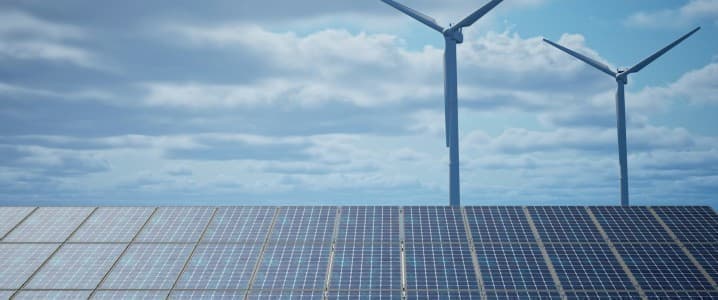
Recent shifts in equipment costs, interest rates, and power prices have led to significant changes in global power purchase agreement (PPA) prices for solar and wind energy. A report by Rystad Energy highlights how breakeven prices for solar photovoltaic (PV) and onshore wind projects have diverged in recent years, with onshore wind costs rising and solar PV costs declining.
While solar PV costs are expected to stabilize within a narrow range over the next five years, wind energy costs may continue to increase and show greater variability across different regions. Despite the higher initial development costs associated with wind projects, they often secure better capture prices, resulting in more favorable project economics in certain cases.
The analysis indicates that fair value PPA prices for solar PV are generally lower than those for onshore wind, but significant geographical differences exist. The capital expenditure (capex) intensity for onshore wind projects varies widely, influenced by two main factors: project costs and local power market prices. Solar PV and onshore wind projects typically incur higher capital expenditure compared to operating expenditure, making capex a critical determinant of breakeven prices along with capacity factors and offtake prices.
Over the past decade, improvements in technology and manufacturing capacity have led to a dramatic reduction in capex intensity for solar projects. In 2010, global average capex was more than $5 per watt, but it has now fallen to an expected $0.80 per watt in 2023. This progress is largely due to China’s dominance in solar PV component manufacturing, which accounts for over 90% of global production of ingots, wafers, cells, and modules. Consequently, capex intensity across different markets remains relatively narrow, with projections for 2025 hovering between $0.80 and $1.00 per watt.
In contrast, capex intensity for wind energy increased sharply from $1.14 per watt in 2020 to $1.59 per watt in 2023, largely due to inflation and rising interest rates affecting manufacturers. Although costs have stabilized, they are expected to remain elevated through 2030. The diversity in wind manufacturing capacity results in varied capex intensities globally, often leading to higher development costs in Western countries compared to those in Asia.
Breakeven Prices and Market Variability
The breakeven price for renewable energy projects is significantly influenced by the cost of capital and resource potential. According to Rystad Energy’s analysis of 35 markets, both utility-scale solar PV and onshore wind are highly sensitive to discount rates. In regions with higher capital costs, particularly developing nations, renewable projects face considerable obstacles, especially in areas lacking abundant solar or wind resources.
The capacity factors for solar and wind energy can differ greatly across various markets, leading to substantial fluctuations in breakeven prices. For solar PV, breakeven prices range from $6 to $8 per megawatt-hour (MWh), while onshore wind prices fall between $9 and $11 per MWh. These figures illustrate the impact of generation variability on project economics.
Operating expenditures (opex) play a lesser role in determining breakeven prices, as neither solar nor wind energy requires fuel inputs, making their economics primarily driven by capital costs.
Capture Prices and Market Dynamics
Another crucial factor influencing PPA prices is the power market’s spot prices, or capture prices. Wholesale power prices vary significantly across regions, shaped by factors such as generation mix, grid infrastructure, and demand patterns. For instance, the California Independent System Operator (CAISO) tends to have the lowest wholesale prices, whereas regions in Australia, like New South Wales and Western Australia, report some of the highest.
Solar technology generally achieves lower capture rates compared to wind. This is mainly due to the phenomenon known as the cannibalization effect, where solar generation peaks coincide with periods of high output, compressing revenues. Although storage solutions are expanding, their growth has not yet matched the rapid increase in solar capacity, resulting in limited flexibility in energy markets.
In New South Wales, solar capture prices have plummeted to around 40%, while markets with significant solar penetration globally often see average capture rates between 40% and 60%. Conversely, onshore wind consistently enjoys capture rates above 80%, with few markets expected to dip below 70% in the foreseeable future.
While solar PV is, on average, more cost-competitive due to lower breakeven prices, its reduced capture rates can adversely affect PPA prices. The analysis reveals that the lowest PPA prices for solar PV are found in Saudi Arabia, where they can drop to as low as $16.3 per MWh. Other regions such as India, China, and several Middle Eastern countries also feature low solar PV cases, benefiting from either low costs or high capacity factors.
In contrast, the highest PPA prices predominantly involve onshore wind projects in markets with elevated costs, low capacity factors, or high discount rates. Examples include regions in Malaysia, Queensland, Germany, and Italy.
As the renewable energy landscape continues to evolve, the interplay of costs, market dynamics, and technological advancements will play a pivotal role in shaping the future of solar and wind energy projects worldwide.







